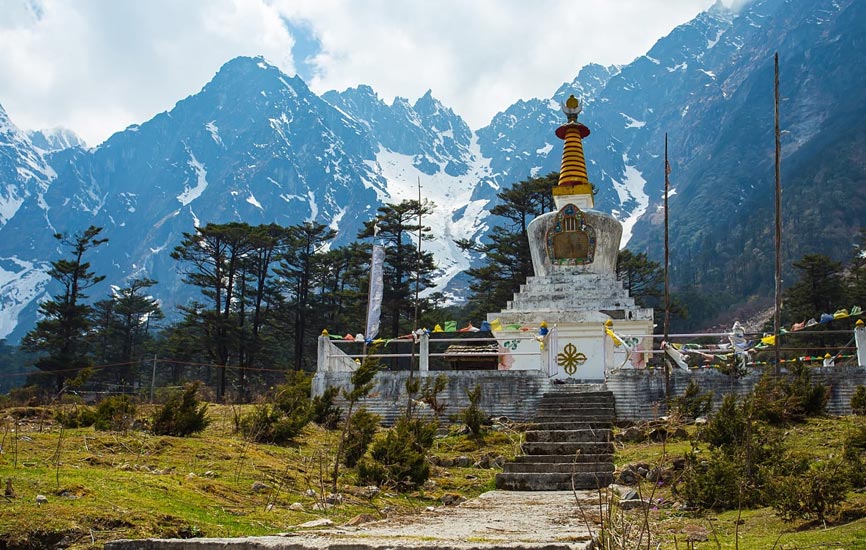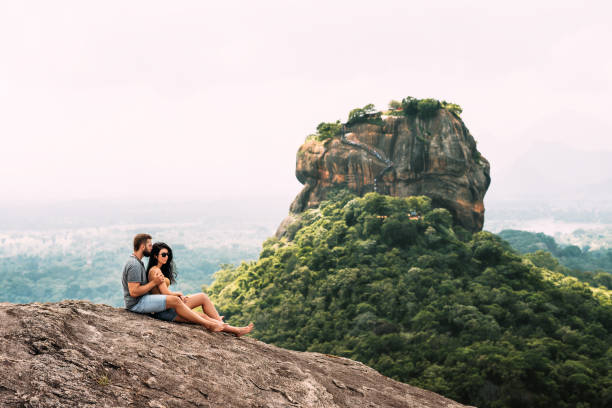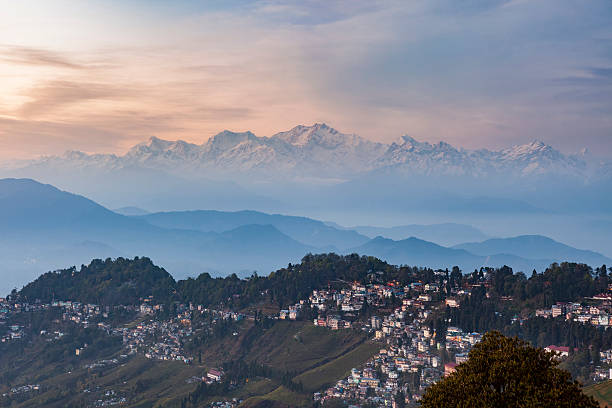All you need to know about Lachung

An elegant and exquisite town adorned the North Sikkim district sharing its border with the panoramic Tibet. Lounged at a very high elevation of 9600 feet, the beautiful hill station is situated at the assemblage of the gushing Lachen and Lachung Rivers. The pristine waters of these rivers are the tributaries of the streaming and tidal River Teesta. The meaning of Lachung translates to ‘a small pass’. This alluring and mesmerizing beauty is not accessible to everyone. So to trail around this hill station, you have to get permission from the government owing to its proximity to the Indo-China border.
The place is one of most profound itineraries especially for tourists who are trying to enroute to Yumthang Valley famously known as the Zero Point. The astounding be-wilderness of this bewitching little hamlet, the exquisite fruit orchards, clear and magnificent streams, the immaculate blue rivers flowing against the tall unbending snow-crested Himalayan mountains bordering the infinite blue and white skies lies the most picturesque small town villages luring thousands of tourists who crave for nature at your behest and peace-seeking aficionados from far wide of globe.
This adorable and splendid little village is said to be the most picturesque village of Sikkim owing to its magnificence and natural scenic beauty.The town is located only 125 km from the capital of Sikkim; Gangtok. The peace and relaxation offered by forests, mountains, and the surroundings are lovely and marvelous.
History of Lachung
This gorgeous wilderness is not only mingled with essence of beauty and ecstasy; but is an abode for spirituality and incorporeality. The town has been known for such practices from centuries. The finest exemplification of such a legend is the Samten Choling Monastery which was constructed back in 1850. The legend around the place says that according to Chinese astrology the Buddhist monastery was built in the year of the metal dog which is considered to hold a high religious and sacred importance in Chinese mythology.
The monastery underwent grand reconstruction in 1930, where devote additions like a sculpture of Buddha, a sculpture of a Guru and a sculpture of Chenrezig were included within the monastery’s premises.
Other than this, several holy texts belonging to the Kangyur and Tengyur reigns were also supplemented inside the monastery. These inclusions were brought from the Tibet, in order to promote and flourish Buddhism in the region. The significant re-engineering took place in 1983, which was undertaken by the Lamas, Furthering this transformation and reformation, the monastery now conducts substantial ceremonies of the region.
What you will like
This breathtakingly beautiful hill station is known for its handicrafts market where you can shop various rugs and blankets. The very famous Shingba Rhododendron Sanctuary is a treasure of the multi-coloured flowers of such kind. The most excursive mention here is of the Lachung Gompa, which is said to be the most bewitching and pleasing sights of all.
Best time to Visit
Well, Gangtok enjoys pleasant weather throughout the year. But for tourist its ideal to visit in between the months of October to mid-December, when the weather is all perfect for sightseeing, and one can enjoy the natural aura of the Himalayan ranges. Through December and January are considered to be the coldest months of the year, sometimes temperature drops down to as low as 1°C. June to September is regarded as the months of Monsoon season that causes massive landslides and disrupting communication in Gangtok.
What you might not like
Transport is a massive problem as there are no local buses available. Never visit the town during monsoon months of June till September as you might not roam around the city due to the torrential rains and pouring sessions.Trekking is very risky and tough due to daunting and unmanaged hills, so this adventure activity should be only undertaken by those who have performed trekking before.




